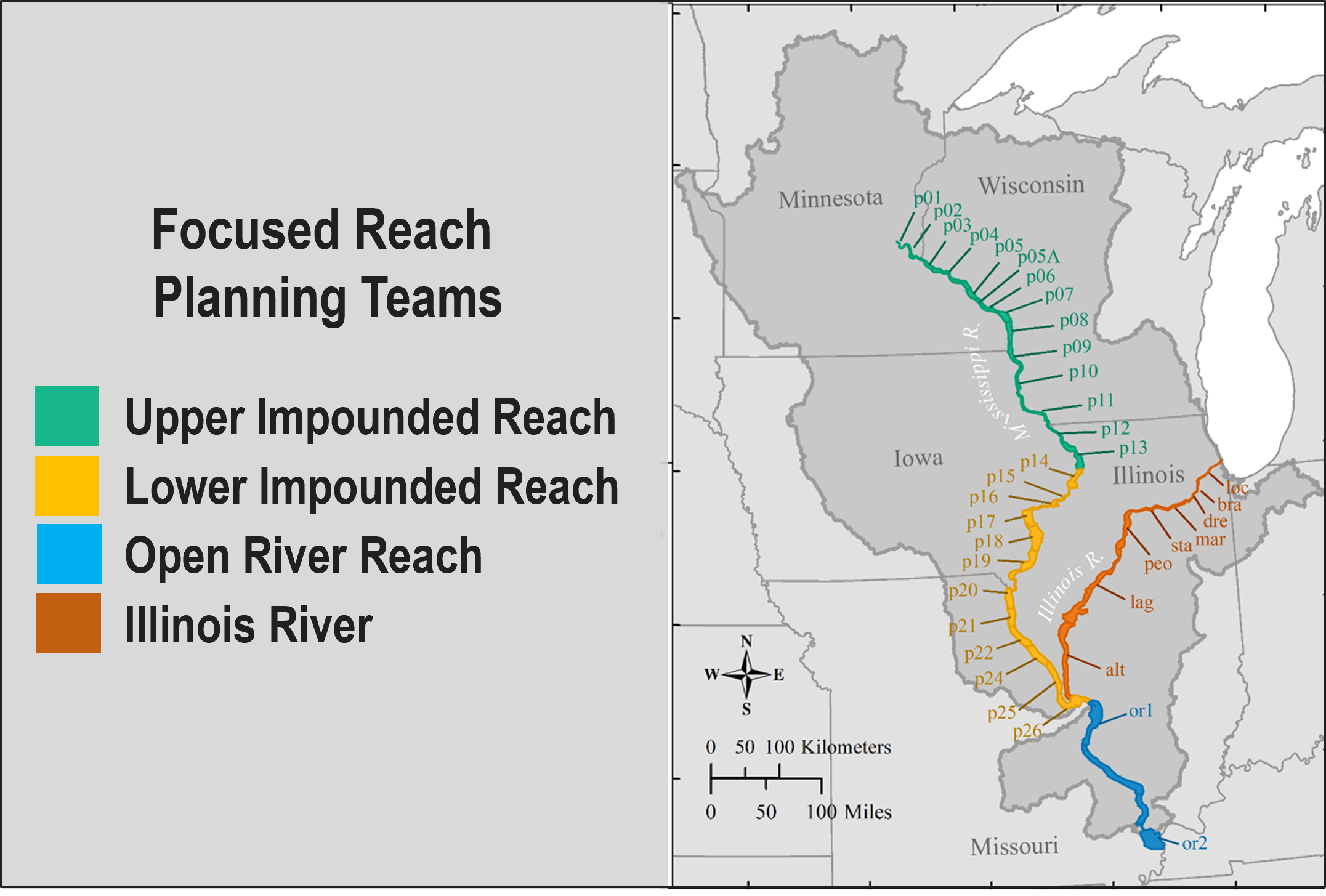REACH PLANNING
Reach Planning will provide a roadmap for where and how ecosystem projects and adaptive management will be planned and completed on the Mississippi River and Illinois River Waterway under the Navigation and Ecosystem Sustainability Program (NESP).
NESP will utilize a reach planning approach to: (1) identify river restoration objectives, (2) identify priority restoration areas, (3) address river system restoration uncertainties, and (4) prioritize restoration work.
Reach Planning Teams
Interagency Focused Reach Planning Teams will lead the planning effort in their reach, with input from the associated members of the river teams to incorporate their knowledge and expertise. Focused Reach Planning Teams in each river reach will be led by two regional technical specialists from USACE (a hydrologist and biologist). The focused reach planning teams will be further composed of representatives from states within the reach, USGS, FWS, UMRBA, and inclusion of the River Team chair(s) from this river reach. The four river reaches that will be covered in this effort include the:
- Upper Impounded Mississippi River Reach (Upper St. Anthony Falls to Pool 13)
- Lower Impounded Mississippi River Reach (Pool 14-26)
- Open/Unimpounded Mississippi River Reach (Melvin Price Locks & Dam to the Ohio River Confluence)
- Illinois River Reach

The NESP also completed reach planning in 2008-2010. The Upper Mississippi River System – Ecosystem Restoration Objectives 2009 Report is the final product of that process and can be viewed here for historic context. The current 2025 Reach Planning effort will build upon the 2008-2010 effort, other past USACE project identification efforts, and system/reach science and research. Key tasks include validating, and where necessary, updating, the reach condition objectives and identifying high priority restoration areas. Focused Reach Planning Teams will also be charged with identifying restoration knowledge gaps or areas of uncertainty. The information collected and summarized in Reach Plans will be used to develop future NESP projects. Reach Plans will require updates or validation every 4-5 years.